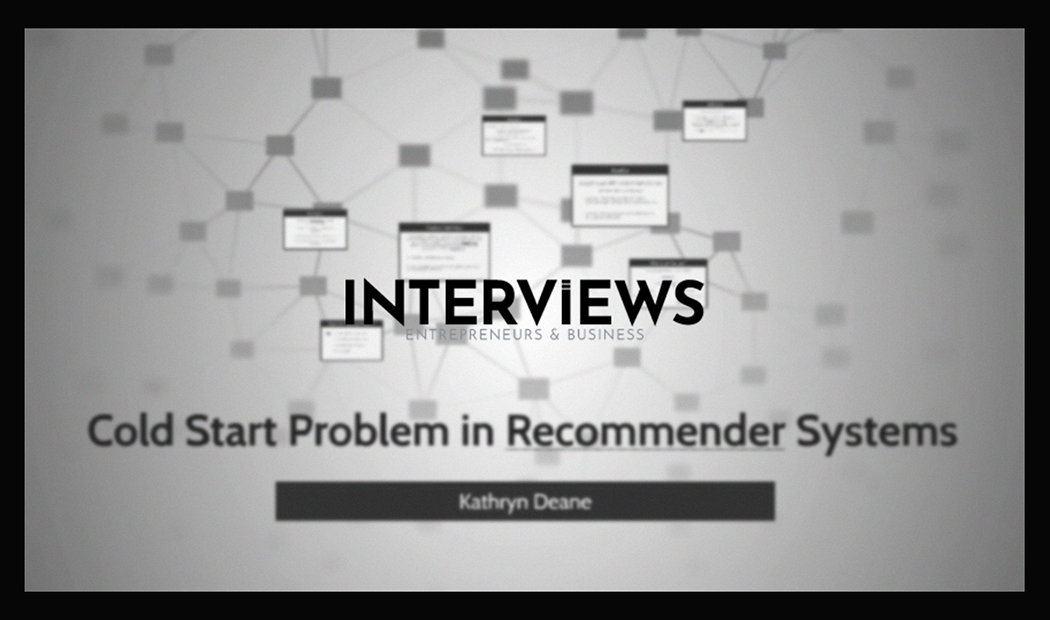The Cold Start Problem: It’s Not Just About Cars on a Winter Morning
Ever tried starting a conversation with someone new? That awkward silence before common ground? Congratulations, you’ve just faced a real-world “cold start problem.” This isn’t just tech talk; it’s a challenge in many areas from car engines to startups and even your immune system.
At its core, the Cold Start Problem is what happens when you try to begin something with few resources or data. Picture a product launching with no users or a recommendation system trying to suggest items without knowing anything about them. Without that spark, things grow… cold. And often, they remain that way.
I. Cold Start Problem (General) – The Network Effect’s Fickle Friend
In broad terms, the cold start problem boils down to this: how do you ignite an enthusiastic user base from scratch? Build a bonfire. You need kindling (early users), fuel (value proposition), and a spark (initial strategy) to get blazing.
Why care? Without an “atomic network” – a small loyal group of early adopters – your product may fizzle out faster than a weak firework. It’s about finding a few people who ‘get it’ and can be your product’s advocates.
Mitigation Strategies – Kindling for Your Bonfire:
- Value-First Approach: Don’t just ask users to join; give them a reason. Present a value proposition so attractive that they’ll want to contribute. This activity builds your network organically. Think of it as planting a seed.
- Transfer Learning – Borrowing Smarts: If you’re into algorithms, think “transfer learning.” Teach your system to lookup existing data to make guesses about new users or items. Use what you know to predict the unknown.
- Collaborative Agents – Teamwork Makes the Dream Work: In complex systems, employ different “agents” (like AI assistants) to work together. If one finds a new user, it can access the wisdom of other agents who interacted with similar users. Teamwork in AI is effective.
- Hybrid Recommendation Approaches – The Best of All Worlds: Mix recommendation systems. Use collaborative filtering, content-based filtering, and more. A diversified approach gives you better angles to tackle cold starts and make relevant suggestions.
- Incentivize, Evangelize, Niche Down – The Startup Toolkit: Startups face this problem intensely. They can offer incentives (discounts, exclusives), turn early users into fans through experiences, use influencers, form partnerships, or beta test for data. Focusing on a niche helps, too.
II. Cold Start Problem in Recommender Systems – When Algorithms are Clueless
Recommender systems thrive on data. But what if they’re faced with… nothing? That’s the Cold Start (CS) problem. It’s when a system can’t make useful suggestions due to lack of user-item interaction data. Imagine asking a librarian who never checked out a book for recommendations.
Types of Cold Starts in Recommendations:
- New-User Cold Start: A new face arrives on your platform. No past interactions, no browsing history – it’s a blank slate. Recommending anything feels like dart throwing.
- New-Item Cold Start: A new product enters the system. No user feedback. Is it good? Who would like it? It’s a mystery surrounded by silence.
Item Cold Start – The New Kid on the Block:
The item cold start problem refers to adding a new item and realizing your recommendation engine is blindfolded. There’s no engagement data, making it tough to guess interest. It’s like launching a new ice cream flavor without knowing if anyone enjoys ice cream.
III. Cold Start Problem in Startups – The Chicken and Egg Dilemma
For startups, the cold start problem becomes an existential crisis. It’s the classic chicken-and-egg situation: you need users to provide value, but you need value to attract users. This loop feels like running on a treadmill.
A key part of the startup cold start is managing the “hard side” of networks. Marketplaces need both buyers and sellers, while platforms require content creators and consumers. Balancing both sides simultaneously is a tricky dance.
IV. Cold Start Problem in AWS Lambda – Serverless… But Not Instant
Even in serverless computing like AWS Lambda, the cold start problem arises. Here, it relates to latency. When a Lambda function has not been used recently, the first call experiences a delay – a “cold start” – as the environment prepares.
Avoiding the Lambda Chill:
- Provisioned Concurrency – Pre-Warmed and Ready: Keep some Lambda instances “warm.” This reduces cold start latency but costs more. It’s like keeping your car engine running – convenient but less efficient.
- Develop with Cold Starts in Mind – Design for Delays: Structure your application to manage potential cold start delays. Use retries, timeouts, or caching to minimize user impact. Be ready for lag.
- AOT-Compilation – Ahead-of-Time Efficiency: For Java and Go, use Ahead-of-Time compilation to cut startup time compared to Just-in-Time. It’s like preheating the oven.
- Keep Your Functions Warm – Ping Regularly: Schedule events to periodically invoke Lambda functions to keep them “warm.” A gentle nudge keeps things running smoothly.
- Reduce Package Size – Lean and Mean Code: Smaller deployment packages lead to faster startups. Only include essential dependencies. Think of packing light for a sprint.
- Use Node.js – JavaScript’s Speed Advantage: Node.js Lambda functions often enjoy faster cold starts compared to other runtimes. JavaScript’s lightweight nature aids here.
- Monitor – Know Your Cold Start Impact: Track cold start metrics in your application. Understand their frequency and how they affect performance. Knowledge is crucial.
V. Cold Start Problem in Cache – Empty and Anxious
Even in-memory caches can get cold starts. When a server launches with an empty cache, it suffers from a “cold cache.”
The Cascade Effect: A cold cache can trigger many requests hitting the underlying dependent service while filling itself. This creates performance bottlenecks and strains systems. It’s like rush hour at a data buffet.
VI. Cold Start (Automotive) – The Engine’s Morning Grumble
Lastly, the original “cold start” – your car engine on a cold morning. Cold starting a car happens when the temperature is below its optimal level.
Why the Struggle? Cold Start Causes:
- Engine Compression: Cold air makes ignition harder because of higher engine compression. It’s like lighting a damp match.
- Viscous Oil: Low temperatures thicken engine oil, making circulation difficult. Picture syrup trying to flow in winter.
- Dense Air: Colder air density affects the fuel-air mixture.
Why Warm-Up Matters: A cold start isn’t just about running the engine; it’s also about warming up the oil. Properly warmed oil ensures lubrication and engine health.
How to Avoid Automotive Cold Start Issues:
- Block/Battery Heaters: In frigid climates, use block heaters or
- battery heater keeps things warm overnight.
- Battery Warm-Up: Flash high beams for 20-30 seconds before starting to warm the battery slightly. A little pre-heating can help.
- Engine Heating Element: Some cars have heating elements for engine warming. Check your car’s features.
Car Too Cold to Start? Here are Tips:
- Turn off all systems: Radio, headlights, heater – switch them OFF. Save battery power.
- Key Cycling: Turn the key from “off” to “start” about ten times. This may help prime the fuel system.
Reasons for Cold Start Issues:
- Weak Starter/Ignition: A failing starter motor makes cold starts harder.
- Faulty Spark Plugs: Worn spark plugs struggle in cold weather.
High Idle at Cold Start – It’s Normal! High idle speed after cold starts is expected. The engine’s computer increases idle speed to burn more fuel and warm up faster.
Rough Idle? Not Always Normal. High idle is expected, but persistent rough idle may signal fuel delivery or timing issues. Investigate further.
Thermotime Switch (TTS): Older fuel injection systems may use a thermotime switch to manage cold start enrichment. It adjusts the fuel mixture for cold conditions.
Error Codes: P050A & P050B. These codes relate to the “Cold Start Idle Control System Performance.” They indicate issues with the cold start idle system.
Cold Start Maintenance Myths:
- Revving to Warm Up? NO! Don’t rev your engine. Just drive gently.
- Engine Damage? No (usually)! Cold starts won’t harm your car if you keep up with oil changes and avoid aggressive driving.
Why the Cold Engine Noise? Engines are at their worst when cold. That’s why they may sound louder or rougher during a cold start. It’s just parts getting to their operating temperature.
VII. Common Cold – Your Body’s Cold Start
A slight detour, but humor me. Even the common cold has a “cold start!” Your immune system ramps up to fight off rhinoviruses.
Cold Culprits: Rhinoviruses cause colds.
Symptoms – The Unwelcome Guests: Runny nose, sore throat, cough, sneezing, general malaise, mild aches, low fever. The whole package.
Duration – The Waiting Game: Symptoms can appear 1-3 days after infection, peak in 1-3 days, and last 7-10 days. Patience is key.
Prevention – Fortify Your Defenses: Sleep well, manage stress, eat healthily. A strong immune system is your best defense.
Remedies – Comfort Measures: Rest, drinks (water, juice), warm liquids (tea, soup), honey, adjust room temperature/humidity, gargle saltwater, saline drops. Treat your body with care.
Zicam – The Zinc Question: Some Zicam products may shorten duration but evidence is mixed. Nasal products can have side effects.
Hydration – Your Inner Antifreeze: Drink fluids for better comfort. Water and juice keep you hydrated.
VIII. Frozen Car Battery – A Cold Start Nightmare
A frozen car battery is an extreme cold start problem. Water expands when it freezes, and battery acid is mostly water.
Frozen Battery Warning Signs:
- Swollen Case: Ice expansion can warp the battery case.
- Case Cracks: Extreme freezing can crack it.
- No Sloshing Sound: A healthy battery has liquid. No sloshing indicates it may be frozen solid.
IX. Cold Start Strategy (Military) – Ignition in a Different Context
“Cold Start” also refers to a military strategy. The Indian Army’s “Cold Start Doctrine” aims for swift conventional strikes against Pakistan.
This shares the “cold start” idea – initiating rapid operation from a standing start. Your startup’s cold start should be less confrontational.
The “cold start problem” isn’t just one issue. It’s a challenge in various domains. Whether launching a startup or getting your car to crank on a frosty morning, understanding and addressing cold starts is crucial. Now, excuse me, I feel a tickle in my throat…





